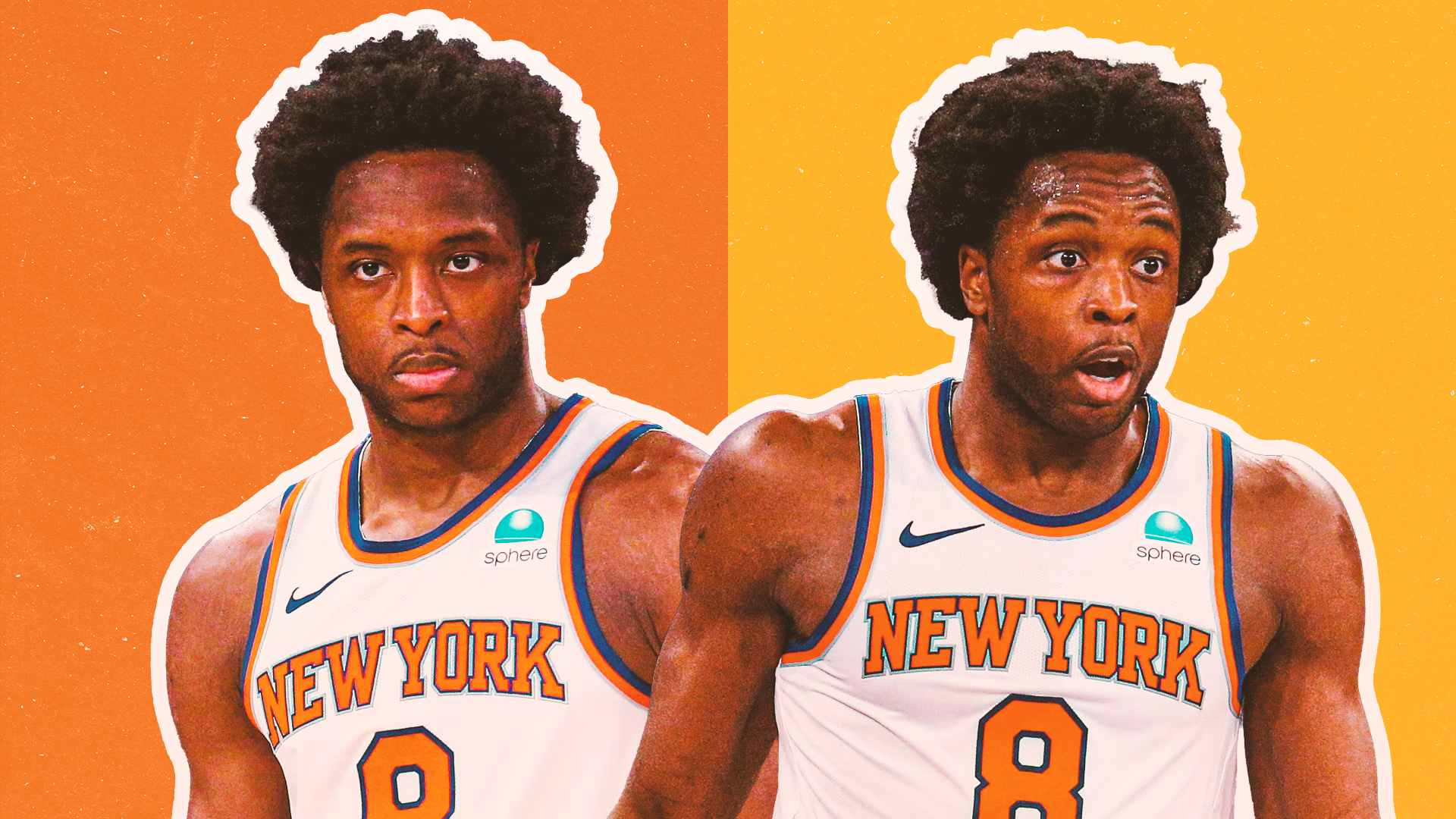DeBusschere, Cheeks, Smith, Spree, Smith, OG
The Knicks have a history of seismic acquisitions, for better or worse. What does the OG Anunoby trade have in common with Knicks deals of the past?
It’s not every day the New York Knicks package a young sixth man who could start for a championship team and a young starter who could one’s sixth man, all in one trade. Then again, it’s not every day a 6-foot-8 two-way skeleton key becomes available to a team that’s needs happen to include one. The OG Anunoby trade is the biggest single trade the Knicks have made in five years, an exceptional moment. Zoom out a little, though, and you’ll see it’s also very same-old same-old.
Your lucky number today is five. On five occasions over the past 55 years, the Knicks made a big move looking to launch a good team into a great one. Sometimes it worked out, sometimes not so much. Interestingly, each of these prior five moves shares some symmetry with the OG trade. You know the headlines from these moves, but many of the details have been lost to time. Let’s take a stroll down memory lane, being careful not to bump into anyone in front of the restricted area. Otherwise it’s not a stroll, it’s a charge.
12/19/68: Walt Bellamy and Howard Komives for Dave DeBusschere
The most famous trade in franchise history did more than open the 5 spot for one Hall-of-Famer Willis Reed and the 4 for another in DeBusschere: it established a third, Walt Frazier, as the team’s lead guard of the future.
Komives, All-Rookie in 1965, saw his minutes and role increase over his years as a Knick, overcoming early jeers from the home fans to become a key part of Red Holtzman’s pressing defense, able to play either guard spot. Pairing Komives with Bellamy meant a lot of talent going out the door – in a good way. Writing of the trade for the Times, Gerald Eskenazi wrote, ““For a change, the Knicks have players other NBA teams covet. Earning more than $60,000 a year . . . Bellamy often disappointed the Knicks with indifferent play. He appeared to be ‘up’ for key games and opposing centers such as Wilt Chamberlain and Bill Russell, and ‘down’ when his club opposed less lofty opponents.”
To this day, players who play up or down to the level of the competition are looked down upon, while no one bats an eye at owners using tiered pricing, raising and lowering ticket costs depending on the opponent. The Knicks may have questioned Bellamy’s intensity, but you can’t argue with his work ethic: between New York and Detroit Bellamy played in all 88 of his team’s games in 1968-69, a record that will absolutely never be broken.
The Knicks won 14 of their first 15 games after acquiring DeBusschere and 26 of 30; the trade has become the quintessential “perfect trade,” the archetype for the move that fits everything in its right place. The deal was great for the team’s on-court success, but while there’s probably no good time to get traded, this one was tough timing for a few of the particulars. Komives was in Toledo with his mother, who was undergoing surgery. DeBusschere’s grandmother passed away the day before the deal. He still made it to New York’s next game – against Detroit, of all teams. Like Anunobdy’s debut, DeBusschere’s was a success: he led all scorers with 21, to go with 15 rebounds and six assists in a Knick win.
While Reed is probably best remembered for fighting Wilt Chamberlain on one leg in inspiring the Knicks to victory in Game 7 of the 1970 Finals, the Stilt also stars in a memorable story about Bellamy. In Gary Pomerantz’s book “Wilt, 1962,” about the year Chamberlain scored 100 in a game against the Knicks, the then-rookie Bellamy tried to appease the unstoppable Wilt at the opening jump-ball:
“‘H’lo, Mister Chamberlain,’ he said with deference. ‘I’m Walter Bellamy.’
“‘Hello, Walter,’ Chamberlain replied. ‘You won’t get a shot off in the first half.’ Chamberlain blocked Bellamy nine teams in the paint that half. ‘O.K., Walter,’ he told Bellamy before the second half started. ‘Now you can play.’ Chamberlain finished with 51 points. Bellamy had 14.”
2/21/90: Rod Strickland for Maurice Cheeks
Maybe the most infamous trade in franchise history. That happens when you trade a guy with 15 years ahead of him for a guy down to his last 2-3. The criticisms are well-known; let us instead reconsider the thinking around the deal at the time it went down. Even questionable moves generally have sensible ideas behind them.
The rest of this piece can be found exclusively on our Patreon for patrons of the Spinning and Winning level and higher. We hope to see you there!


